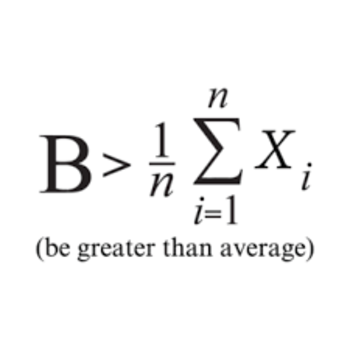For a):
Ammonium chloride, #NH_4Cl# dissolves in solution to form ammonium ions #NH_4^(+)# which act as a weak acid by protonating water to form ammonia, #NH_3(aq)# and hydronium ions #H_3O^(+)(aq)#:
#NH_4^(+)(aq)+H_2O(l) -> NH_3(aq)+H_3O^(+)(aq)#
As we know the #K_b# for ammonia, we can find the #K_a# for the ammonium ion. For a given acid/base pair:
#K_a times K_b=1.0 times 10^-14# assuming standard conditions.
So, #K_a(NH_4^(+))=(1.0 times 10^-14)/(1.8 times 10^-5)=5.56 times 10^-10#
Plug in the concentration and the #K_a# value into the expression:
#K_a=([H_3O^(+)] times (NH_3])/([NH_4^(+)])#
#5.56 times 10^-10~~([H_3O^(+)] times [NH_3])/([0.1])#
#5.56 times 10^-11=[H_3O^(+)]^2#
(as we can assume that one molecule hydronium must form for every one of ammonia that forms. Also, #K_a# is small, so #x ≪ 0.1#.)
#[H_3O^(+)]=7.45 times 10^-6#
#pH=-log[H_3O^(+)]#
#pH=-log(7.45 times 10^-6)#
#pH approx 5.13#
For b):
(i) Determine the species present after mixing.
The equation for the reaction is
#color(white)(mmmmm)"OH"^"-" + "NH"_4^"+" -> "NH"_3 + "H"_2"O"#
#"I/mol": color(white)(mll)0.010 color(white)(mll)0.010color(white)(mol/L)0#
#"C/mol": color(white)(m)"-0.010"color(white)(ml)"-0.010"color(white)(m)"+0.010"#
#"E/mol": color(white)(mll)0color(white)(mmmm)0color(white)(mmml)0.010#
#"Moles of OH"^"-" = "0.100 L" × "0.1 mol"/"1 L" = "0.010 mol"#
#"Moles of NH"_4^"+" = "0.100 L" × "0.1 mol"/"1 L" = "0.010 mol"#
So, we will have 200 mL of an aqueous solution containing 0.010 mol of ammonia, and the pH should be higher than 7.
(ii) Calculate the pH of the solution
#["NH"_3] = "0.010 mol"/"0.200 L" = "0.050 mol/L"#
The chemical equation for the equilibrium is
#"NH"_3 + "H"_2"O" ⇌ "NH"_4^"+" + "OH"^"-"#
Let's re-write this as
#"B" + "H"_2"O" ⇌ "BH"^"+" + "OH"^"-"#
We can use an ICE table to do the calculation.
#color(white)(mmmmmmmll)"B" + "H"_2"O" ⇌ "BH"^"+" + "OH"^"-"#
#"I/mol·L"^"-1":color(white)(mll)0.050color(white)(mmmmmll)0color(white)(mmm)0#
#"C/mol·L"^"-1":color(white)(mm)"-"xcolor(white)(mmmmmll)"+"xcolor(white)(mll)"+"x#
#"E/mol·L"^"-1":color(white)(m)"0.050-"xcolor(white)(mmmmm)xcolor(white)(mmm)x#
#K_text(b) = (["BH"^"+"]["OH"^"-"])/(["B"]) = x^2/("0.050-"x) = 1.8 × 10^"-5"#
Check for negligibility:
#0.050/(1.8 × 10^"-5") = 3 × 10^3 > 400#. ∴ #x ≪ 0.050#
#x^2/0.050 = 1.8 × 10^"-5"#
#x^2 = 0.050 × 1.8 × 10^"-5" = 9.0 × 10^"-7"#
#x = 9.5 × 10^"-4"#
#["OH"^"-"] = 9.5 × 10^"-4" color(white)(l)"mol/L"#
#"pOH" = -log(9.5 × 10^"-4") = 3.0#
#"pH = 14.00 - pOH = 14.00 - 3.0" = 11.0#


